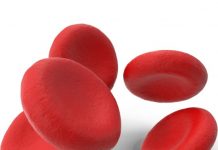Rare blood diseases or disorders are those blood conditions which are not found commonly and are less heard of as compared to the common blood diseases. These blood disorders occur in only a very small percent of the population and mostly affect small or isolated groups of individuals. Since rare blood diseases affect very few people, the time and research money spent on them is little and in fact the information available about them is not much. But one must always be aware of the symptoms of rare blood diseases and this info can be found in the following given article:

Fanconi Anemia (FA)
Fanconi Anemia is a very scarcely found blood disorder which affects the bone marrow and is generally inherited by the patient. What this blood disorder does is that it decreases the production of the blood cells. The symptoms of this disease are:
- Abnormalities in the heart, lung and digestive tract.
- Problems in the bones especially in the hip bone, ribs and spine. This can lead to a curved spine.
- Changes found in the color of the skin
- Abnormality in the ears can cause deafness
- Low birth weight, short height, short head
- Mental retardation
- Failure to thrive and learning disabilities can be the other possible symptoms of this rarely found blood disease.
Hemolytic Anemia
Hemolytic anemia is a rare kind of an anemia which happens due to hemolysis. This a blood disorder which is caused due to breakdown of red blood cells in the blood vessels or in any other part of the body. The following are a few of the signs of this blood abnormality which occurs in just a few cases:
- Jaundice is one of the signs of this blood disease and refers to the yellowish coloring of the skin and the eyes.
- Another sign of hemolytic anemia is pain in the upper abdomen. This pain may be caused due to enlarged spleen or gallstones.
- Severe reaction to the blood transfusion process may be another warning sign of this blood disease.
- Pain and ulcers in legs is also a symptom of hemolytic anemia. People who have sickle cell anemia can experience a condition in which he sickle shaped cells can clog the smaller vessels of the blood and thus cause blockage in the blood flow. This can thereby cause pain and ulcers in the legs.













